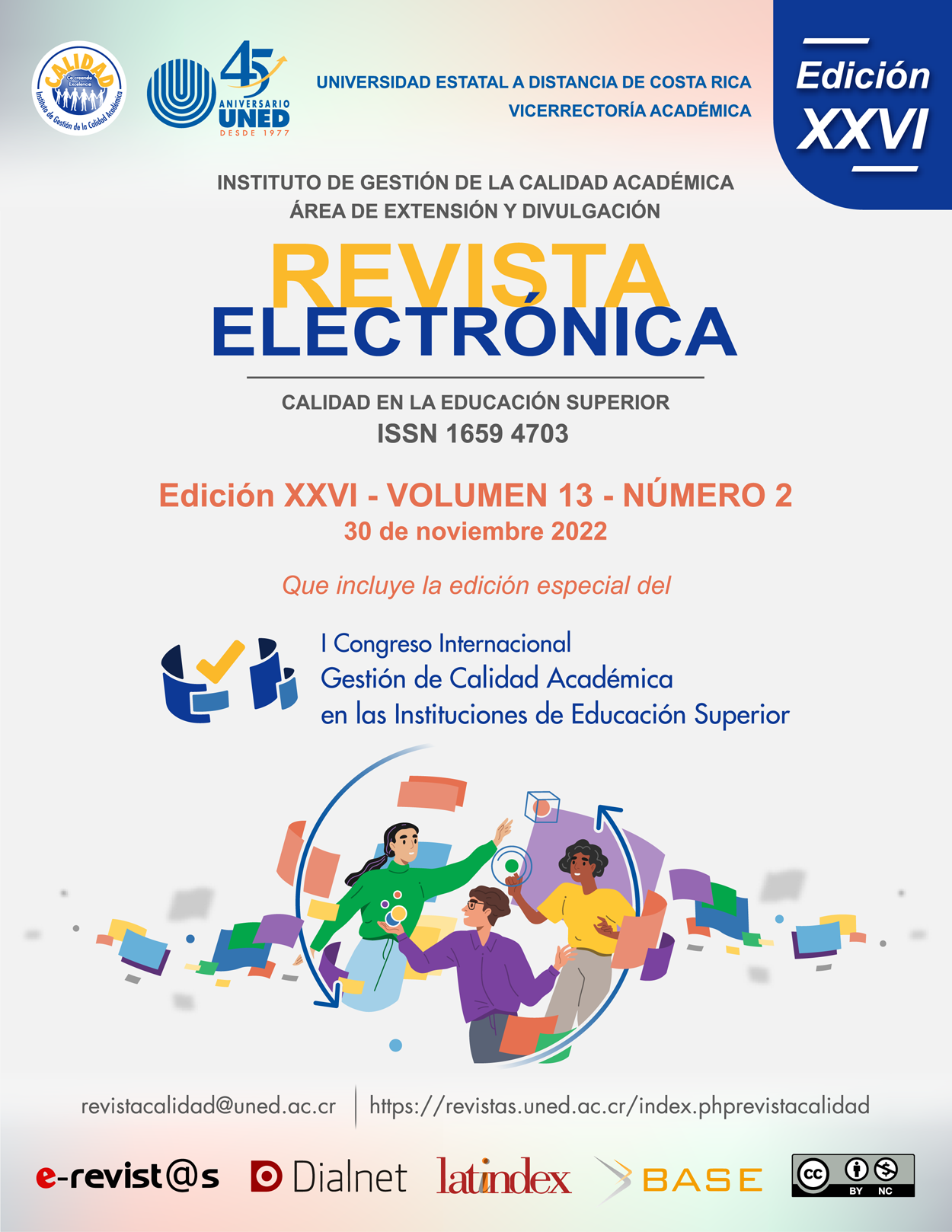STEAM educational model applied to the teaching of a second language. Integrated methodology proposal
DOI:
https://doi.org/10.22458/caes.v13i2.4320Keywords:
Steam model, English language, integrated methodologyAbstract
This paper explores the need to incorporate an integrated learning teaching proposal based on the STEAM educational model and apply it to the teaching of a second language. It is based on a bibliographical inquiry in which reference is made to other educational experiences where this model is being worked on and has been integrated as a new innovative methodology capable of interlinking the theoretical with practical and in line with the current needs of the population There are various teaching models-learning incorporated in various educational institutions; however, the incorporation of science and technology, engineering, art and mathematics has been seen as an additional element to educational work and not as the basis ; So in this work a model of integration of the STEAM areas is proposed.
References
Capraro, R. & Slough, S. (2009). Project-Based Learning. An Integrated Science, Technology, Engineering, and Mathematics (STEM) Approach. Rotterdam: Sense Publishers.
Halliday, M., McIntochs, A., Stevens, P. (1964). Linguistic Sciences and LanguageTeaching. London: Logman.
Hutchinson, T & Waters, A. (1987). English for Specific Purposes: A Learner-Centered Approach. Cambridge: Cambridge University Press.
MartÍnez, F. (2021). La enseñanza de cultura científica en la escuela ¿Por qué falla?, ¿cómo mejorar? Revista mexicana de investigación educativa, (27’93).
Moreno, N. (2017). Educación Steam/Stem: Apuesta hacia la formación, impacto y proyección de seres criterios.
Ruiz, D. (2017). Integrando STEAM en el aula bilingüe, Universidad de Burgos.
Saborío S, & Garcia M. (2021 Construyendo una STEAM-E-WEB (Science, Technology, Engineering, Art, Mathematics-English Web). Revista Innovaciones Educativas
Sanders, M. (2009). STEM, STEM Education, STEMmania. The Technology Teacher. International Technology Education Association.
Satchwell, R. & Loepp, F. H. (2002). Designing and Implementing an Integrated Mathematics, Science, and Technology Curriculum for the Middle School. Journal of Industrial Teacher Education.
Osborne, J., Dillon, J. (2008). Science education in Europe: critical reflections. The Nuffield Foundation.
Expansión, El Salvador : Economía y Demografía ( 3 de Septiembre de 2022). Recuperado de: https://datosmacro.expansion.com/demografia/natalidad/el-salvador
Unión Europea , EUR-Lex (5 de septiembre de 2022). Recuperado de https://eur-lex.europa.eu/legal-content.
World Economic Forum. (2020). The Future of Jobs Report 2020. Recuperado de: https://www.weforum.org/reports/the-future-of-jobs-report-2020/digest
Downloads
Published
How to Cite
Issue
Section
License
Copyright (c) 2022 Revista Electrónica Calidad en la Educación Superior

This work is licensed under a Creative Commons Attribution-NonCommercial 4.0 International License.
Esta revista provee acceso libre inmediato a su contenido bajo el principio de que hacer disponible gratuitamente la investigación al publico, lo cual fomenta un mayor intercambio de conocimiento global.
